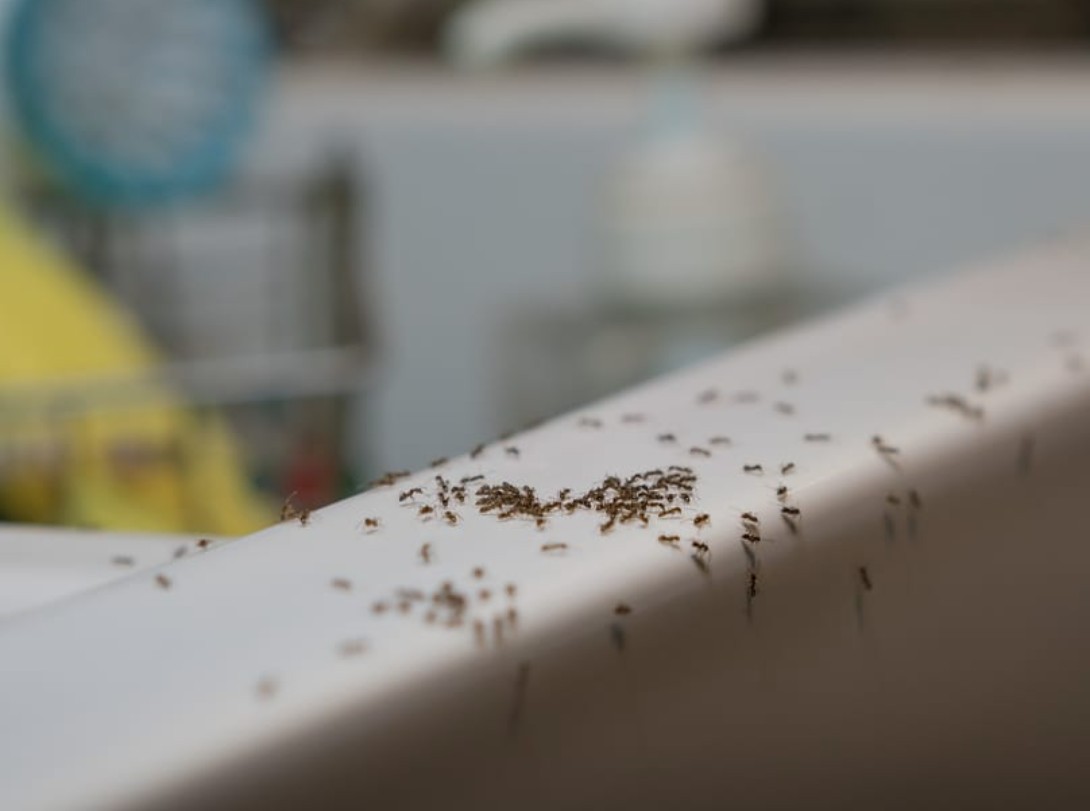Picture this: winter’s icy grip finally loosens, the sun peeks through the clouds, and the snow begins to melt. But as you welcome the warmth of spring, a tiny army marches into your kitchen – Ants! It’s a common scenario for Midwest homeowners. Just as you think you’ve survived the harsh winter, you’re faced with another unwelcome guest. But why does this happen? What makes spring the season of ants in the kitchen? The answer lies in the fascinating interplay between seasonal changes, ant behavior, and your home’s environment.
The Snowmelt Factor: Moisture and Migration
Spring in the Midwest means melting snow. While we humans rejoice at the sight of blooming flowers, for ants, it’s a different story. As the snow melts, it saturates the ground, flooding ant nests and forcing them to seek higher, drier ground. Your home, especially your kitchen, becomes an attractive refuge. It’s warm, dry, and potentially full of delicious food – a perfect haven for a displaced ant colony.
The increased moisture also plays a role in ant movement. Ants rely on pheromone trails to communicate and navigate. These chemical signals become stronger and last longer in humid conditions, making it easier for ants to find their way to food sources – like those in your kitchen. So, the melting snow not only displaces ants but also makes it easier for them to find their way into your home.
The Rise of Sugar Trails: Food Sources in Spring
Spring isn’t just about melting snow; it’s also about a resurgence of life. Plants bloom, trees bud, and food becomes more abundant. This includes the crumbs and spills that might have accumulated in your kitchen during the winter months.
Ants have a keen sense of smell, and they can detect even the smallest traces of food. That forgotten drop of honey, the unsealed sugar container, or the sticky countertop from yesterday’s baking session – all become beacons for hungry ants. As the weather warms and food sources become more plentiful, ants shift their focus from seeking water to seeking food. Your kitchen, with its abundance of sweet treats and savory snacks, becomes a prime target.
Midwest Ant Species and Their Spring Behavior
Several ant species are common culprits in Midwest kitchens during spring. Pavement ants, known for their small size and dark brown color, often nest in cracks in pavement and foundations, making their way indoors in search of food and shelter. Odorous house ants, named for the rotten coconut smell they emit when crushed, are also frequent invaders, attracted to sweet and greasy foods.
Understanding the behavior of these species is crucial for effective control. For example, pavement ants tend to create multiple trails leading to different food sources, while odorous house ants often change their nesting locations, making them harder to track.
Prevention and Control: Protecting Your Kitchen
The good news is that you can take steps to prevent and control ant infestations in your kitchen. Here are some practical tips:
- Proper food storage: Store food in airtight containers, wipe up spills immediately, and keep countertops and floors clean.
- Garbage disposal: Empty trash cans regularly and keep them sealed.
- Moisture control: Reduce humidity by using dehumidifiers and ensuring proper ventilation.
- Seal entry points: Caulk cracks and crevices in walls and foundations, and install door sweeps to prevent ants from entering.
- Maintain cleanliness: Regularly clean your kitchen, paying attention to areas where ants are likely to trail, such as under sinks and appliances.
How Pest Control Consultants (PCC) Can Help
While DIY efforts can be helpful, sometimes you need the expertise of professionals to effectively control ant infestations. At Pest Control Consultants (PCC), we have in-depth knowledge of the common ant species found in the Midwest and their seasonal behaviors.
Our services include:
- Thorough inspections: Identifying ant entry points and nesting sites.
- Targeted treatments: Eliminating existing colonies and preventing new infestations.
- Preventative measures: Creating a customized plan to keep ants from returning.
Don’t let ants ruin your enjoyment of the spring season. Contact PCC today for a free consultation and let our experts help you safeguard your home and enjoy a pest-free spring.
Conclusion
Spring in the Midwest is a time of renewal and rebirth, but it can also be a time of increased ant activity in your kitchen. By understanding the connection between snowmelt, food sources, and ant behavior, you can take proactive steps to protect your home. Remember, prevention is key, but professional help is available when needed.
Don’t let ants take over your kitchen this spring! Contact Pest Control Consultants today for a free consultation and reclaim your home from these persistent pests.
